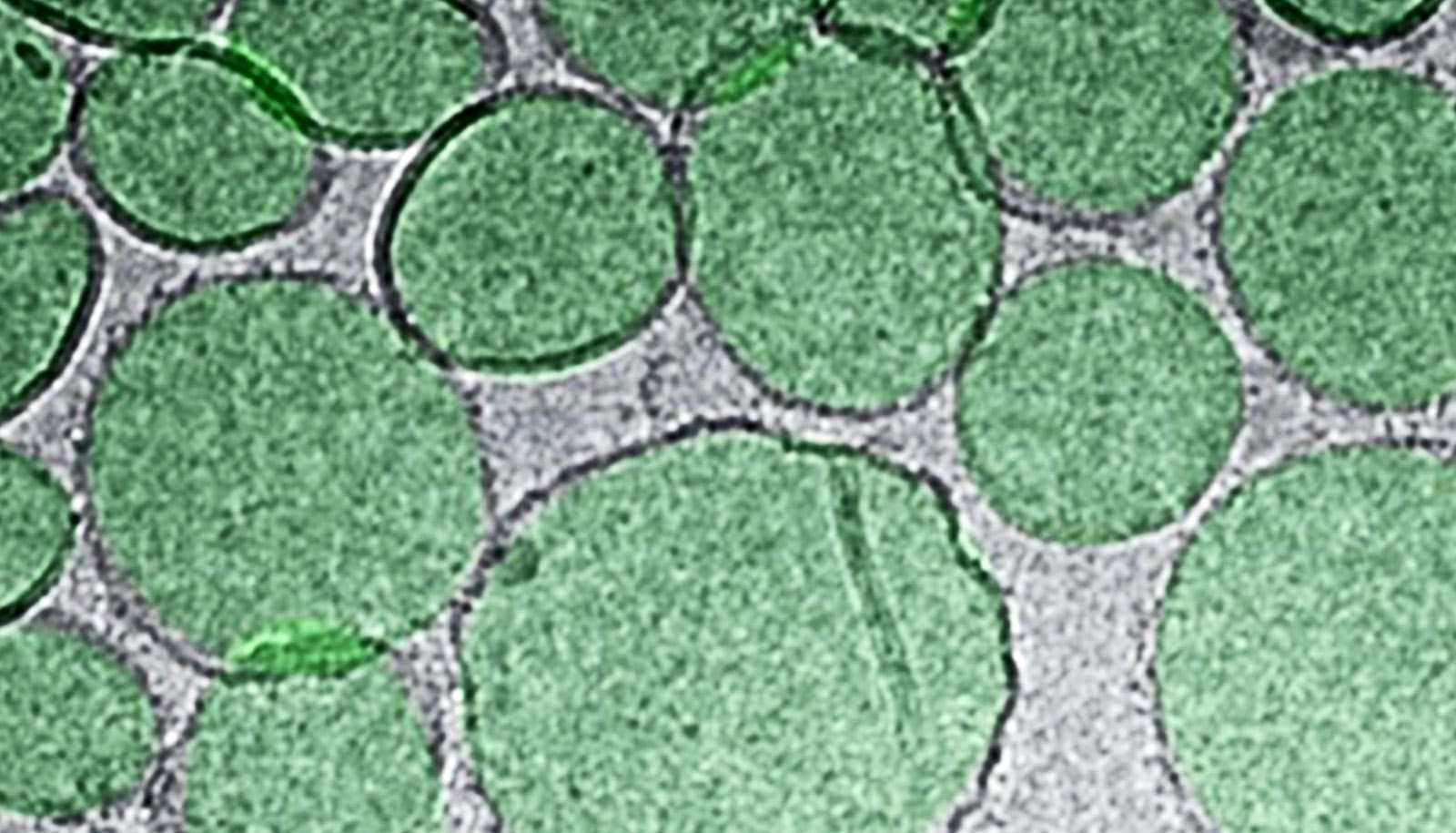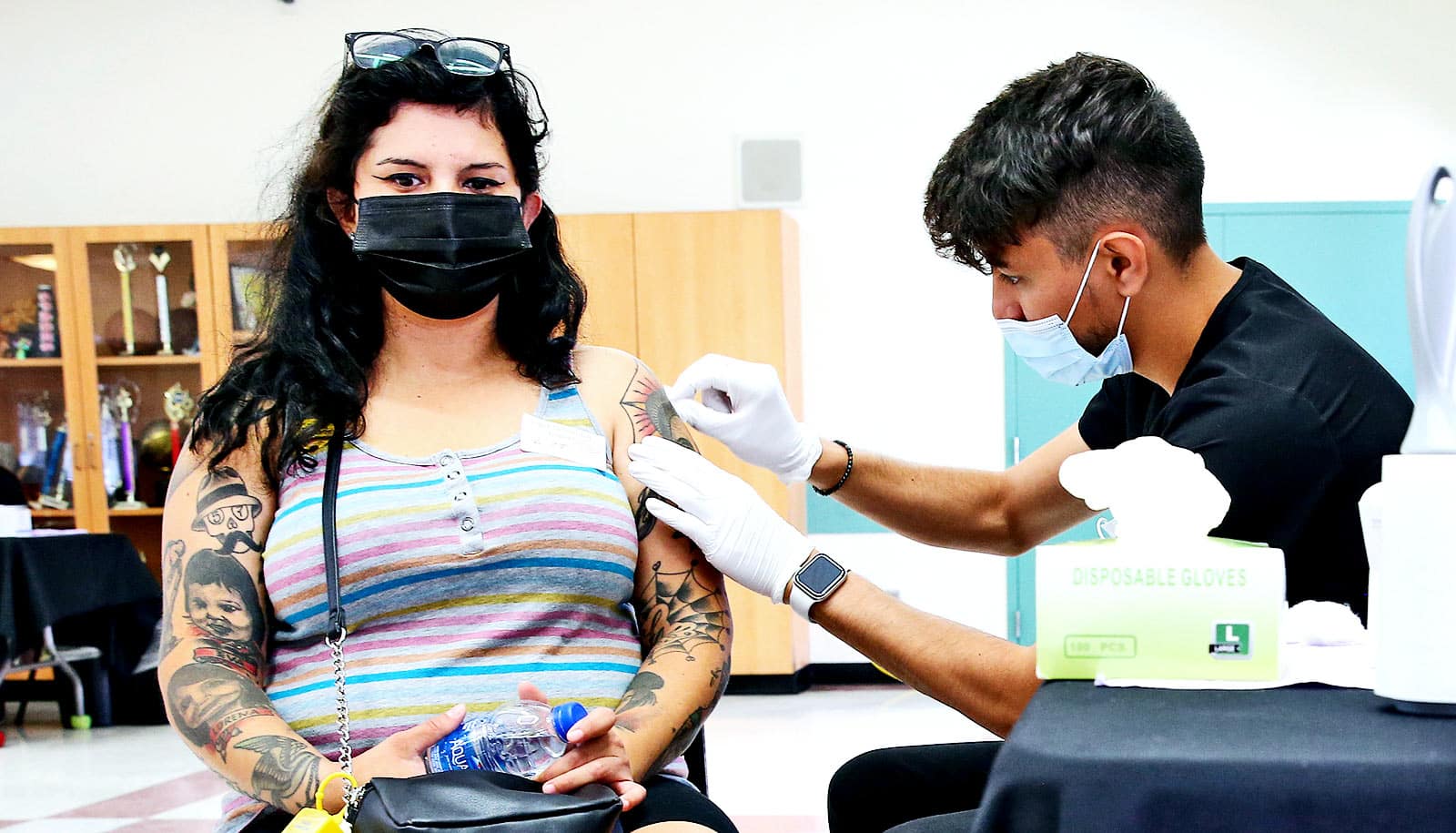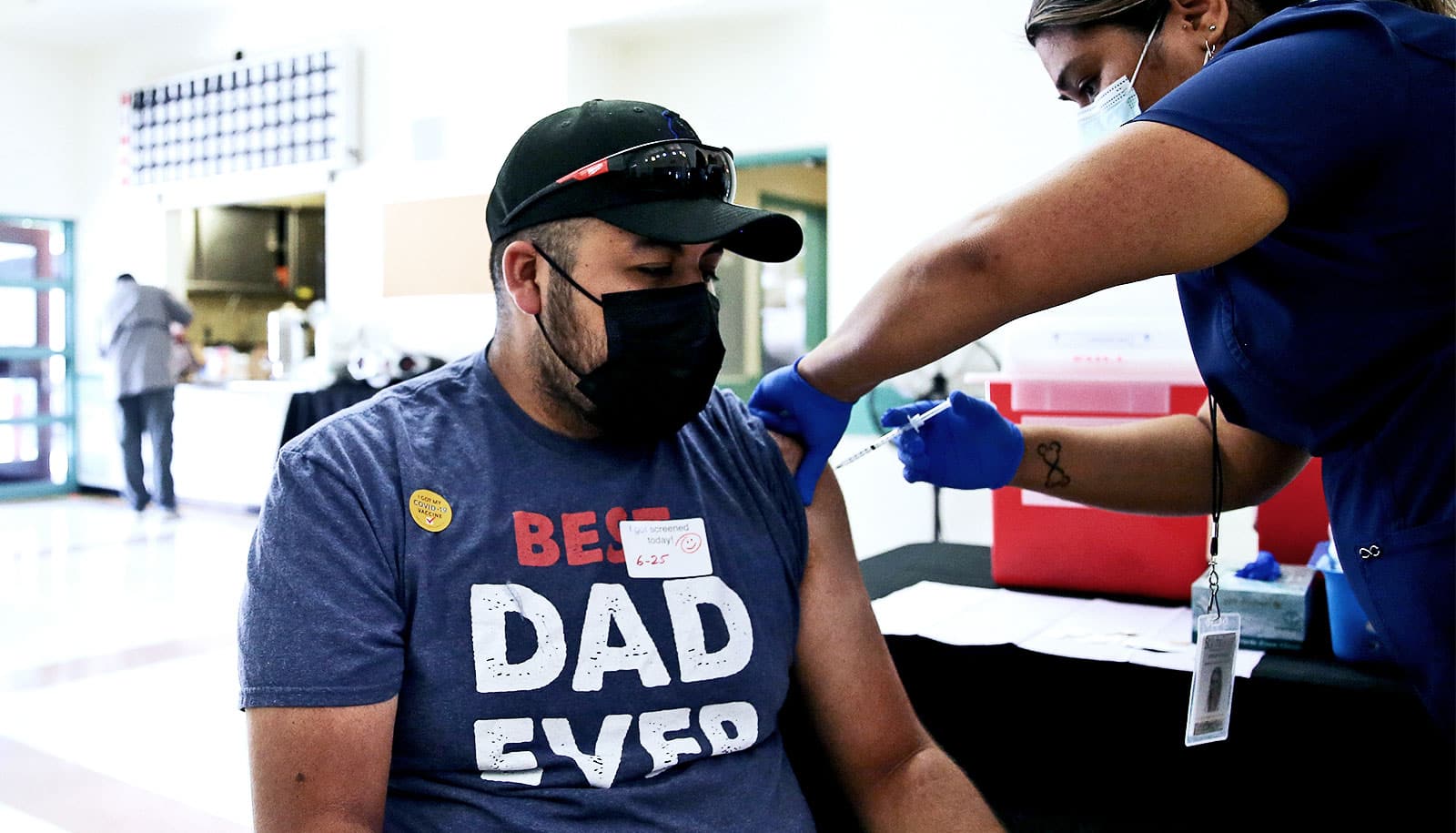
A close-up view of the RBD particle vaccine (green). (Credit: McGill)
Mimicking coronavirus could be key for COVID-19 vaccine
Designing a COVID-19 vaccine that mimics the structure of the coronavirus itself may be the path to an effective shot, researchers say.
A new technique could help increase the effectiveness of vaccines against the novel coronavirus, the virus that causes COVID-19, researchers report.
One solution to the problem of creating an effective COVID-19 vaccine might lie in designing vaccines that partially mimic the structure of the virus, says Jonathan F. Lovell, associate professor in the biomedical engineering department at the University at Buffalo.
One of the proteins on the virus—located on the characteristic COVID spike —has a component called the receptor-binding domain, or RBD, which is its “Achilles heel.” That is, Lovell says, antibodies against this part of the virus have the potential to neutralize the virus.
It would be “appealing if a vaccine could induce high-levels of antibodies against the RBD,” Lovell says. “One way to achieve this goal is to use the RBD protein itself as an antigen, that is, the component of the vaccine that the immune response will be directed against.”
The team hypothesized that by converting the RBD into a nanoparticle (similar in size to the virus itself) instead of letting it remain in its natural form as a small protein, it would generate higher levels of neutralizing antibodies and its ability to generate an immune response would increase.
Lovell’s team had previously developed a technology that makes it easy to convert small, purified proteins into particles through the use of liposomes, or small nanoparticles formed from naturally-occurring fatty components. In the new study, the researchers included within the liposomes a special lipid called cobalt-porphyrin-phospholipid, or CoPoP. That special lipid enables the RBD protein to rapidly bind to the liposomes, forming more nanoparticles that generate an immune response, Lovell says.
The team observed that when they converted the RBD into nanoparticles, it maintained its correct, three-dimensional shape and the particles were stable in incubation conditions similar to those in the human body. When laboratory mice and rabbits were immunized with the RBD particles, high antibody levels were induced. Compared to other materials that are combined with the RBD to enhance the immune response, only the approach with particles containing CoPoP gave strong responses.
Other vaccine adjuvant technology doesn’t have the capacity to convert the RBD into particle-form, Lovell says.
“We think these results provide evidence to the vaccine-development community that the RBD antigen benefits a lot from being in particle format,” Lovell says. “This could help inform future vaccine design that targets this specific antigen.”
The paper appears in Advanced Materials . Additional coauthors are from Texas Biomedical Research Institute, Penn State, McGill University, the US Centers for Disease Control and Prevention, and the University at Buffalo.
The National Institutes of Health and McGill University supported the work.
Source: University at Buffalo
The post Mimicking coronavirus could be key for COVID-19 vaccine appeared first on Futurity .
Share this article:
This article uses material from the Futurity article, and is licenced under a CC BY-SA 4.0 International License. Images, videos and audio are available under their respective licenses.
Related Articles:
Why your second shot COVID vaccine really matters
July 20, 2021 • futurityCOVID-19 vaccines likely activate strong, lasting immunity
July 6, 2021 • futurityLinks/images:
- https://www.futurity.org/coronavirus-spike-protein-2333772-2/
- https://www.futurity.org/vaccines-viruses-immunity-adjuvant-2408272/
- https://doi.org/10.1002/adma.202005637
- http://www.buffalo.edu/news/releases/2020/10/028.html
- https://www.futurity.org/covid-19-vaccine-coronavirus-2463462/
- https://www.futurity.org


